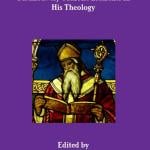
***
It’s been a long day, and I’m tired. So I thought that I would simply share some links from a prior issue of Interpreter: A Journal of Latter-day Saint Faith and Scholarship in case you missed them or need to be reminded of them
Louis C. Midgley, “Marjorie Newton’s Account of the Faith of the Māori Saints: A Critical Appraisal”
Abstract: Marjorie Newton’s Mormon and Maori is a version of her 1998 thesis in which she rejects key elements of the Māori Latter-day Saint historical narrative. This contrasts with her earlier, faith-affirming Tiki and Temple. In Mormon and Maori Newton targets what she sees as Māori/missionary mythology. She has written for different audiences; one was for secular religious studies scholars, while the other was for faithful Saints. Midgley rejects Newton’s claim that a Mormon American cultural imperialism requires Māori to abandon noble elements of their culture. Faithful Saints are liberated from the soul destroying behavior that results from the loss of traditional Māori moral restraints. Midgley insists that Newton has little understanding of the deeper structures of Māori culture.
Review of Marjorie Newton, Mormon and Maori (Salt Lake City: Greg Kofford Books, 2014). 248 pp. $24.95 (paperback).
Timothy Gervais and John L. Joyce, ““By Small Means”: Rethinking the Liahona”
Abstract: The Liahona’s faith-based functionality and miraculous appearance have often been viewed as incongruous with natural law. This paper attempts to reconcile the Liahona to scientific law by displaying similarities between its apparent mechanisms and ancient navigation instruments called astrolabes. It further suggests the Liahona may have been a wedding dowry Ishmael provided to Lehi’s family. The paper displays the integral connection Nephi had to the Liahona’s functionality and how this connection more clearly explains the lack of faith displayed by Nephi’s band during the journey than traditional conceptions of its faith-based functionality.
Abstract: The story of Joseph Smith retrieving gold plates from a stone box on a hillside in upstate New York and translating them into the foundational text of the Restoration is well known among Latter-day Saints. While countless retellings have examined these events in considerable detail, very few have explored the geological aspects involved in this story. In particular, none have discussed in detail the geological materials that would have been required by the Nephite prophet Moroni ca. ad 421 to construct a sealed container able to protect the gold plates from the elements and from premature discovery for some fourteen centuries. This paper reports the outcomes from a field investigation into what resources would have been available to Moroni in the Palmyra area. It was conducted by the authors in New York state in October 2017.
Jeff Lindsay, “Orson Scott Card’s “Artifact or Artifice”: Where It Stands After Twenty-five Years”
Abstract: When Orson Scott Card wrote “The Book of Mormon: Artifact or Artifice?” in 1993, he applied keen skills as an author of fiction to help readers understand how to detect the many hidden assumptions an author brings into a text. Subtle details such as the choice of what to explain or what not to explain to readers can quickly reveal the era and environment of the author. The value of Card’s analysis is reconsidered in light of extensive Book of Mormon studies since 1993 and has been found, for the most part, to have withstood the test of time well, like the Book of Mormon itself.
Jim Hawker, “Let There Be a Famine in the Land”
Abstract: The drought recorded in Helaman 11 is probably the only dated, climate-related event in the entire Book of Mormon that could have left a “signature” detectable over 2,000 years after it occurred. Typical methods to detect this kind of event using dendrochronology (the study of tree rings) or sediment cores from lake beds either do not go back far enough in time or are not of high enough resolution to detect the event described in Helaman 11. However, over the last 15 to 20 years, various researchers have turned to analyzing stalagmites collected from caves to reproduce the precipitation history of a given area. These analysis methods are now producing results approaching the 1–year resolution of dendrochronology, with 2 sigma (95%) dating accuracies on the order of a decade. There is an ongoing debate with regard to where the events in the Book of Mormon took place. One of the proposed areas is Mesoamerica, specifically in southern Mexico and Guatemala. This paper will test the hypothesis that the drought described in the Book of Helaman took place in Mesoamerica using the results of precipitation histories derived from the analysis of three stalagmites compared to determine if there is evidence that a drought took place in the expected time frame and with the expected duration.
Gregory L. Smith, “Gossamer Thin: 2 Nephi’s “Flaxen Cord” and the Anti-Masonic Thesis”
Abstract: Some have seen evidence of anti-Masonic rhetoric in the Book of Mormon and cite 2 Nephi 26:22 in support of this theory, since Satan leads sinners “by the neck with a flaxen cord.” It is claimed that this is a reference to Masonic initiation rituals, which feature a thick noose called a cable-tow or tow-rope. Examining the broader rhetorical context of 2 Nephi demonstrates that the “flaxen cord” more likely refers to something slight and almost undetectable. To test this hypothesis, I undertake a survey of the use of the phrase flaxen cord in 19th century publications. I also examine analogous phrases from the Bible. I examine fifty examples, seven of which are excluded because they do not contain enough information to support either claim. Of the remaining 43 examples, a full two-thirds (67%) describe a cord that is trivial or easily snapped. Only 7% denote a thick, strong rope, and 17% describe a thin rope that is strong. Given (1) the rhetorical context of 2 Nephi, (2) an expression that usually refers to a cord of trivial thickness and strength, and (3) virtually all poetic, scriptural, or allegorical uses imply fragility, the evidence overwhelmingly contradicts the anti-Masonic thesis.
Spencer J. Condie, “Christmas in Transition: From Figgy Pudding to the Bread of Life”
Abstract: While Christmas traditions around the world have evolved, some losing their focus on the Christ child, there is still need for us to center our thoughts and hearts on his message of forgiveness and redeeming love.
Posted from Rapid City, South Dakota











